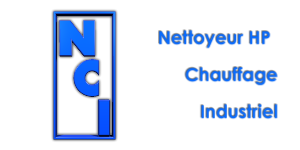The Ultimate Guide to Understanding Information Portals in the Modern Era
What Is an Information Portal?
An information portal functions as a centralized online platform designed to aggregate, organize, and deliver digital resources to users. Whether for businesses, educational institutions, or governments, these portals streamline access to critical data, reducing redundancy and enhancing efficiency. By consolidating disparate sources into a single interface, they improve data accessibility while ensuring a seamless user experience. Unlike traditional websites, information portals prioritize customization, allowing users to tailor content to their specific needs.
Key Features of Effective Information Portals
Successful information portals share common attributes such as intuitive navigation, robust search capabilities, and secure authentication. They emphasize data accessibility by offering multilingual support, mobile compatibility, and offline access options. Integration with cloud-based digital resources ensures real-time updates, while analytics tools help track user behavior to refine the user experience. These platforms also often include collaboration features, enabling teams to share insights and manage projects efficiently.
How Information Portals Enhance User Experience
The primary goal of an information portal is to optimize the user experience by minimizing friction in accessing digital resources. For instance, personalized dashboards allow users to prioritize tasks, while AI-driven recommendations surface relevant content automatically. A well-designed portal reduces cognitive load by simplifying complex processes, ensuring users find what they need quickly. This focus on usability not only boosts productivity but also fosters long-term engagement with the online platform. red dog casino 100 no deposit bonus codes
Common Use Cases for Information Portals
- Education institutions use them to centralize course materials, assignments, and communication tools.
- Businesses deploy them for internal knowledge management, employee training, and client portals.
- Government agencies leverage them to provide citizens with transparent access to policies, services, and public records.
Choosing the Right Information Portal for Your Needs
Selecting the ideal information portal requires evaluating scalability, integration capabilities, and alignment with organizational goals. Consider whether the online platform supports custom workflows, third-party apps, and secure handling of sensitive digital resources. Prioritize solutions that offer robust analytics to measure data accessibility and user experience metrics, ensuring continuous improvement.
Trends Shaping the Future of Information Portals
Emerging trends include AI-powered personalization, blockchain for data integrity, and voice-activated interfaces. As remote work becomes standard, portals are increasingly designed for hybrid environments, blending physical and digital digital resources. Enhanced data accessibility through APIs and open-source frameworks also allows seamless interoperability with other systems.
Best Practices for Maintaining an Information Portal
Regular updates, user feedback loops, and rigorous testing are essential for sustaining a high-performing information portal. Ensure data accessibility by maintaining backup systems and disaster recovery protocols. Training programs for users and administrators can maximize adoption, while monitoring performance metrics helps identify bottlenecks in the user experience.
Security Considerations for Information Portals
Protecting digital resources within an information portal demands advanced encryption, multi-factor authentication, and compliance with regulations like GDPR. Regular vulnerability assessments and staff training mitigate risks of breaches. Transparent privacy policies build trust, ensuring users feel confident sharing sensitive data on the online platform.
The Role of AI in Modern Information Portals
Artificial intelligence enhances data accessibility by automating content curation and predictive analytics. Chatbots and virtual assistants improve user experience by providing instant support, while machine learning algorithms detect patterns in user behavior to optimize portal design. AI also enables dynamic filtering of digital resources, ensuring users receive personalized, actionable insights.
Case Studies: Real-World Applications of Information Portals
- A global university implemented a unified information portal to centralize research databases, student records, and faculty communications, boosting operational efficiency by 40%.
- A healthcare provider used a portal to grant patients secure access to medical records, appointment scheduling, and teleconsultation tools, improving patient satisfaction scores.
- A city government launched a public online platform to streamline service requests, tax filings, and emergency alerts, reducing administrative costs by 25%.
Challenges in Implementing Information Portals
Common hurdles include resistance to change from users accustomed to legacy systems, high initial costs for development, and ensuring compatibility with existing infrastructure. Balancing data accessibility with security requirements can also be complex, requiring careful planning and stakeholder collaboration.
Measuring Success in Information Portal Projects
Track key performance indicators such as user retention rates, time spent on the online platform, and the frequency of digital resource utilization. Surveys and feedback forms provide qualitative insights into user experience improvements, while analytics tools quantify engagement levels and system performance.
Resources for Learning More About Information Portals
- Books like *The Future of Information Portals* by Jane Doe explore design principles and case studies.
- Courses on Coursera and Udemy cover building and managing information portals with modern technologies.
- Industry forums like InfoPortalHub offer peer-to-peer discussions and best practice guides.
Frequently Asked Questions About Information Portals
Q: What distinguishes an information portal from a regular website? A: Unlike static websites, information portals dynamically aggregate digital resources and adapt to user preferences, offering a more interactive user experience. Q: How do information portals ensure data accessibility for all users? A: Through features like screen reader compatibility, language translation, and mobile responsiveness, information portals cater to diverse needs.
Conclusion: Embracing the Power of Information Portals
In an era defined by information overload, information portals stand as vital tools for organizing digital resources and enhancing user experience. By prioritizing data accessibility and leveraging cutting-edge technologies, these online platforms empower individuals and organizations to thrive in a connected world.
Posted in: Non classé
Leave a Comment (0) →